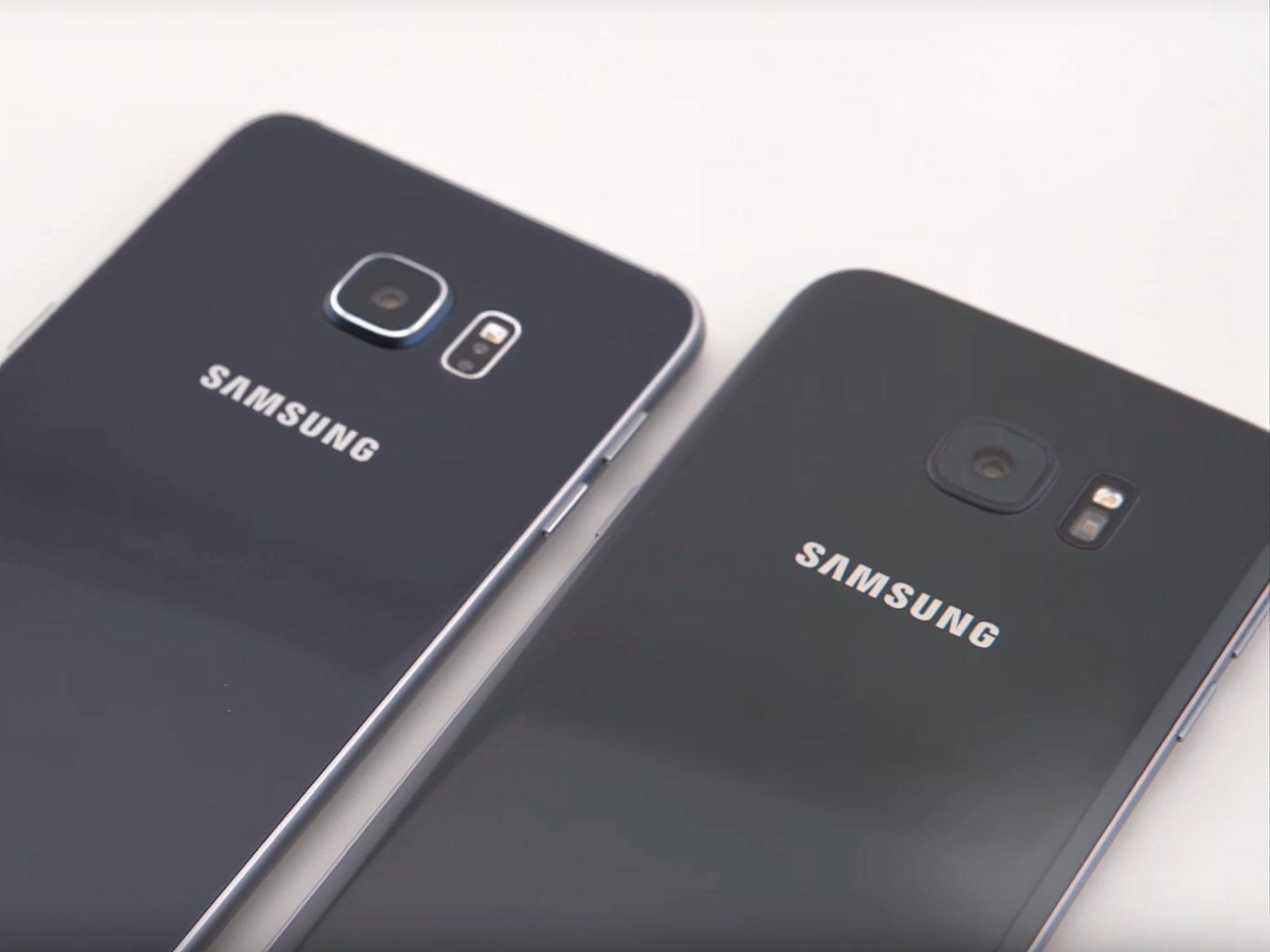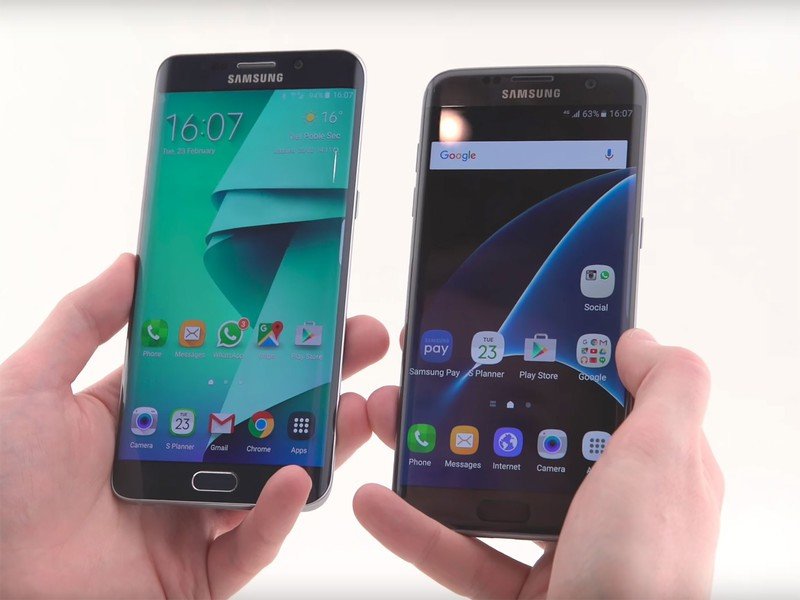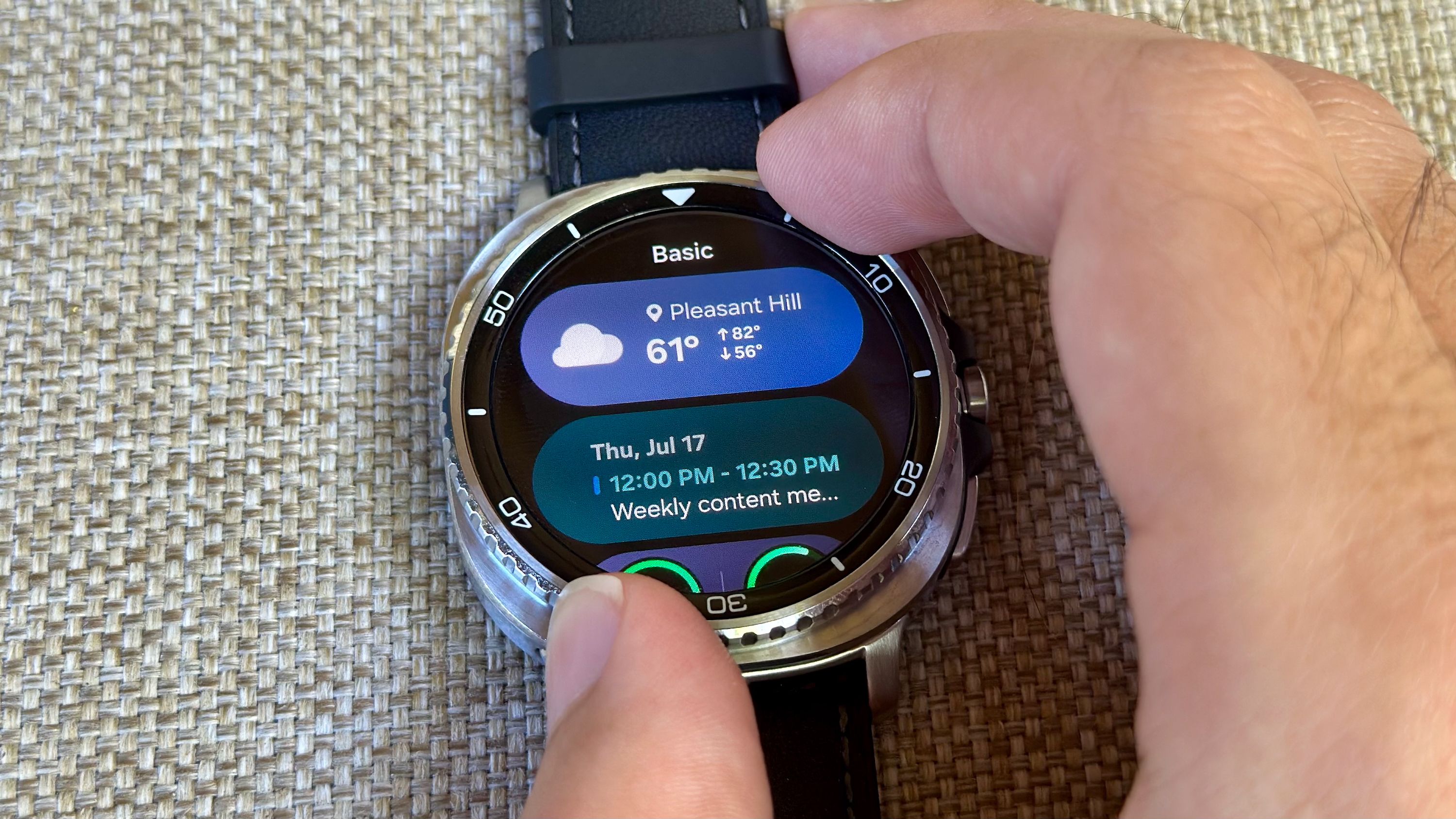Quick comparison: Samsung Galaxy S7 edge versus Galaxy S6 edge+

Last year Samsung gave us the Galaxy S6 edge and S6 edge+ — two dramatically different sizes for the same curvy smartphone. However as we kick off a new generation of Galaxy phones, the Galaxy S7 edge mixes things up by coming between the two. It's got a 5.5-inch display, making it bigger than the regular GS6 edge, but smaller than the GS6 edge+.
But size is just one of the areas of contrast between last year's big-screened "edge" variant and this year's. For as much as these two are alike, there are plenty of small changes that total more than the sum of their parts.
But first, the specs. Here's how the Galaxy S6 edge+ and Galaxy S7 edge — let's just call them the GS6 and GS7 for simplicity's sake — stack up on paper.
| Category | Galaxy S6 edge+ | Galaxy S7 edge |
|---|---|---|
| Operating System | Android 5.1.1 | Android 6.0.1 |
| Processor (U.S., China, Japan) | Exynos 7420 Octa-core4X ARM Cortex-A53, 4X ARM Cortex-A57 | Qualcomm Snapdragon 820 quad-core2X Qualcomm Kryo + 2X Qualcomm Kryo |
| Processor (Rest of World) | Exynos 7420 Octa-core4X ARM Cortex-A53, 4X ARM Cortex-A57 | Exynos 8890 Octa-core4X ARM Cortex-A53, 4X Samsung Exynos M1 |
| RAM | 4GB | 4GB |
| Storage | 32/64GB | 32GB + microSD |
| Display | 5.7-inch QHD SuperAMOLED | 5.5-inch QHD SuperAMOLED |
| Main Camera | 16-megapixel + OIS, f/1.9 lens1.12μm pixels | 12-megapixel + OIS, f/1.7 lens1.4μm pixels |
| Front Camera | 5-megapixel + f/1.9 lens | 5-megapixel + f/1.7 lens |
| Battery | 3,000mAh internalAdaptive Fast Charging, Wireless Charging | 3,600mAh internalAdaptive Fast Charging, Wireless Charging |
| Connectivity | 802.11ac Wifi, 2.4/5GHz, MIMO (2x2), 620MbpsBluetooth v4.2 LE, ANT+NFC, Location (GPS, Glonass, Beidou) | Wi-Fi 802.11 ac MIMO, Bluetooth v4.2 LE, ANT+, USB 2.0, NFC |
| Water resistance | None | IP68 rating |
| Dimensions | 154.4 x 75.8 x 6.9mm | 150.9 x 72.6 x 7.7 mm |
| Weight | 153 grams | 157 grams |
| Fingerprint security | Yes | Yes |
| Colors | black, white, gold, green (varies by market) | black, white, gold, silver (varies by market) |
Unsurprisingly, a new generation of smartphone hardware brings with it improvements in performance, imaging and battery life. What's interesting, however, is how Samsung has achieved these improvements. The GS7's camera, for instance, takes a step down in resolution from the 16-megapixels of the GS6, but uses a brighter lens and larger pixels on the sensor for improved low-light pics.
Samsung has also placated fans by bringing back removable storage in the GS7 — though Android 6.0's Adoptable Storage feature isn't supported.
And although it's got a smaller screen, this year's model ups the battery capacity significantly — a 20 percent jump, in fact.
All this stuff has to go somewhere, which is why the GS7 edge is a good bit thicker than its predecessor. It's also worth remembering that the new phone's water resistance requires the use of internal gaskets, which can contribute to a device's thickness too. Fortunately this thickness comes with one welcome side-effects: The GS7's camera hump doesn't stick out anywhere near as much as the GS6's.
Get the latest news from Android Central, your trusted companion in the world of Android

The rounder sides and curvier corners of the Galaxy S7 edge make it feel more organic, if a little tougher to hold onto.
The basic physical design of the phone hasn't undergone any huge changes, but there are subtle differences worth pointing out. As well as having a rounded display, the back glass of the GS7 is also curved, in a similar style to the Galaxy Note 5. (And in contrast to the flat back of the GS6 edge+). This means the metal trim becomes incredibly thin around the sides, making the newer phone a little more slippery in the hand. Aside from that, the glass is now ever so slightly curved around the top and bottom, in addition to the sides, making for a more organic feel device overall.
Other visual differences include some subtle accent color changes — the black GS7 models, for instance, use darker accent colors around the home key and camera lens.

On the software side, the latest version of Samsung's TouchWiz lives atop Marshmallow on the GS7 series, while the GS6 edge+ remains on Lollipop — Android 5.1.1 to be precise — at the time of writing. An update to Marshmallow should be imminent, as other GS6 family phones have already received the latest version of the OS. And with it, Samsung's 2015 lineup will inherit many of the features and visual changes that come in the GS7.
These include a move away from the bright teal and green colors seen in last year's UI, along with updated weather widgets and a significant overhaul for the Edge Screen. In Marshmallow, the software part of the "edge" experience becomes more useful and more customizable, with larger panels and a focus on information feeds as well as shortcut buttons; you'll want to check out our hands-on video with the new Edge Screen features for more specifics.
It's too early to come to any firm conclusions about the Galaxy S7 edge, but at a glance it seems like a solid improvement upon an already fantastic phone — assuming a slightly smaller display is a deal-breaker for you.
Galaxy S6 edge+ owners, are you considering trading up and buying a GS7 edge? Shout out in the comments!

Alex was with Android Central for over a decade, producing written and video content for the site, and served as global Executive Editor from 2016 to 2022.

